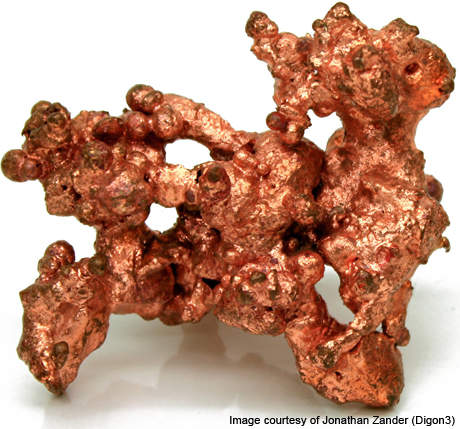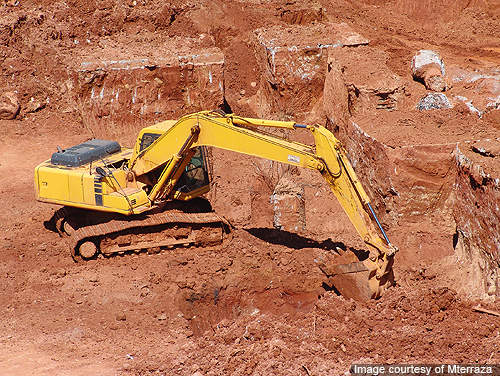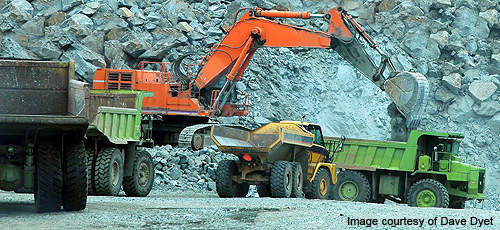The Kansanshi mine in Zambia is the eight largest copper mine in the world, with two open pits. The property is located nearly 10km north of the Solwezi town and 180km northwest of the Copperbelt town of Chingola.
The mine is 80% owned by First Quantum Minerals through its subsidiary Kansanshi Mining. The remaining 20% is held by a subsidiary of ZCCM Investment Holdings, a state-owned company in Zambia. The mine began production in April 2005.
The mine produced 270,724t of copper and 167,395oz of gold in 2013. An expansion at the mine is underway to increase the production capacity to 400,000t of copper by 2015.
Northwest Rail Company (NWR), in cooperation with Grindrod, will construct a 290km long new railway line connecting Chingola to the Kansanshi, Lumwana and Kalumbila mines. The railway line, to be constructed with an investment of $489m, intends to transport ore and copper within Zambia.
Expansion phases
The expansion is being carried out over three phases. The $32m Phase 1 involved capacity enhancement of the oxide circuit by 20% to 7.2 million tonnes (mt). It resulted in a flexible operation that allows easy switch between mixed and sulphide circuits to suit the mining operations.
Phase 2, which was completed in November 2013 at a cost of $200m, increased the annual oxide treatment capacity by 15mt. The mixed ore and sulphide ore are milled together by a second sulphide circuit (S2) following the phase 2 expansion.
The third phase of expansion includes construction of a new 16mtpa sulphide concentrator through a single stage Semi-Autogenous Grinding (SAG) mill, which can be extended up to 25mtpa by adding a ball mill in the future. This phase has been budgeted at $565m.
The new Sulphide concentrator (S3) is expected to be operational by 2015. The sulphide ore will be milled by the new S3 following the third phase of expansion, while the mixed ore will be milled by the S2 circuit.
The copper concentrate produced from the S3 will be supplied to a new smelter currently being constructed at the mine, under the Kansanshi copper smelter development project.
Kansanshi Copper Smelter development project
The Kansanshi copper smelter development project involves setting up of a new smelter, which will be shared by the Kansanshi (33%) and Sentinel (67%) mines. The project is estimated to cost approximately $690m.
The smelter will produce 300,000t of treated copper concentrate annually. It is scheduled to start operations by mid 2014 and will be fully operational in early 2016.
WorleyParsons will provide engineering services for the project.
Copper reserves
The proven and probable reserves at the mine include 725.6mt, graded at 0.82% copper. The measured and indicated resources have been estimated at 744.3mt, graded at 0.86% copper. The mine life is estimated to be 17 years.
The deposit is hosted within a wide, northwest trending, closing anticline with a strike length of nearly 12km. The vein-type deposit is concentrated within a tectonised rock complex and has a major mineralisation control.
Geology and mineralisation
The deposit outlines a well mineralised, north-south striking zone. The zone is characterised by complicated faulting, abundant injection vein networks, development of brecciate units and down-dropped rock structures.
Vein-specific copper mineralisation that is either stratiform or concordant is hosted within and directly adjacent to mesoscopic veins, in thin bands and veinlets oriented parallel to rock bedding or foliation. It also occurs as disseminated mineralisation related with albite-carbonate alteration. The main veins and vein swarms plunge sub-vertically, perpendicular to the fold axis.
Mineralisation within the brecciate zones occurs within oxidised and supergene enriched layers. Secondary copper minerals are distributed in a complex manner across these layers. The primary copper sulphide mineralisation is chalcopyrite-dominated and is associated with trace amounts of bornite, minor pyrite and pyrrhotite.
The oxide mineralisation is largely dominated by chrysocolla. It also hosts malachite, limonite and cupriferous goethite. The mixed zone, a combination of both oxide and primary-style mineralisation, also hosts significant amounts of chalcocite, minor local copper and tenorite.
Mining and processing
Mining at the Main and NW open pits is done by conventional open pit methods involving hydraulic excavators and a mining fleet of haul trucks.
Processing of the three ore types, namely leached ore, mixed float and sulphide, is through either an oxide circuit or a sulphide and transitional ore mixed float circuit. Treatment of the sulphide ore involves crushing, milling and flotation to produce copper in concentrate.
A HPL circuit is used to convert the flotation concentrate to final cathode. The HPL circuit processes the copper concentrate in the autoclaves. The operation involves oxidation and leaching.
The circuit residue is treated through a gravity gold circuit that replaced the gold circuit in 2009. Contained gold was originally planned to be recovered into bullion through cyanide leaching and elution, but the gold circuit was not put into operation due to technical problems. In the gravity gold circuit, the efficient gravity concentration is combined with pyro-metallurgical of lower grade gravity concentrate.






